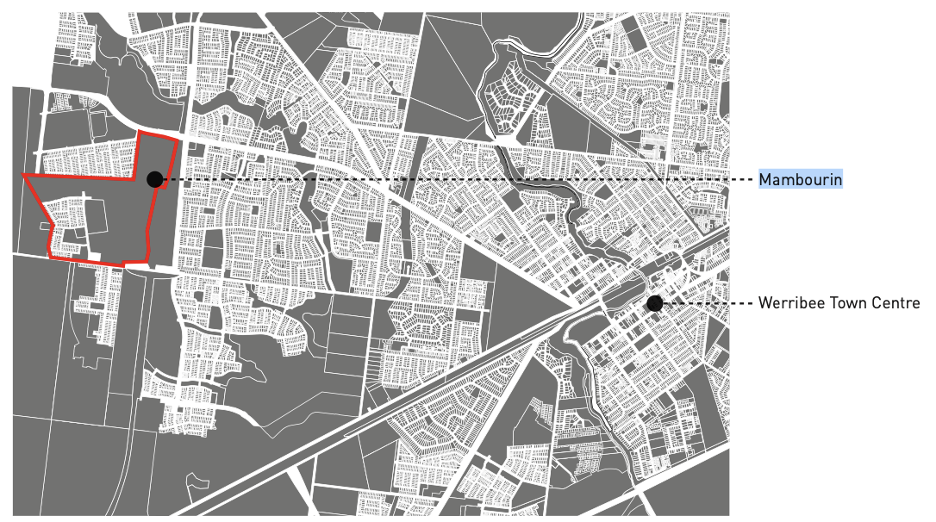Melbourne's approach to planning healthy neighbourhoods has become well known for its ambition to create easily walkable places. Under the banner of the '20-minute neighbourhood', walkability is a key planning principle for Melbourne, Australia, via Victoria State Government's 35-year Melbourne plan.
The concept has gained traction in many other places around the globe. In the UK, the Town and Country Planning Association and Sport England explored the transferability of the 20-minute neighbourhood principle to support active lifestyles in towns in England. The TCPA has also published a wide range of resources.
We have looked at a recent report by Monash University on planning Mambourin, a new city neighbourhood of Melbourne, to summarise some of the typical implementation challenges and lessons learned.
What is the 20-minute neighbourhood?
In Victoria State Government's 35-year Melbourne plan, the 20-min neighbourhood refers to the proactive planning for short (800m) distances to vital local services. An 800-metre distance is considered walkable by the majority of the neighbourhood population.
The Victoria State Government commits to actions that support local services' proactive provision and coordination by incorporating the principle into its planning policies. The 20-minute neighbourhood principle emphasises on walkable access to "community infrastructure". This includes civic services, such as parks, and other 'non-traditional' services, such as co-working spaces and third spaces that encourage social interaction.
Through increased levels of social interaction and active forms of mobility for all parts of a neighbourhood, Mambourine planners seek to support the well-being of all residents especially in the planning of new town extensions.
What are the benefits and challenges?
Benefits of the 20-minute neighbourhood planning principle
The main link between a walkable, green neighbourhood and the long-term health and wellbeing of residents is now reasonably well established. Read more on our blog: Health impacts of housing projects – and how you can improve them
As outlined in the report by Monash University on the principal benefits seen in Mambourin, the principal benefits of a 20-min neighbourhood are the following:
Challenges applying the 20-minute neighbourhood planning principle
20-minute neighbourhoods don't only exist in Melbourne of course, but the conscious effort to plan for short distances is a conscious effort that will need to be done at plan making stage.
The report on the 20-min neighbourhood notes the following challenges, especially in the implementation of the community infrastructure.
20-minute principles in UK planning
In England, 91% of the 803,000 homes built between 2011 and 2019 were built in the suburbs. The suburban location of development highlights a key implementation challenge for the 20-minute neighbourhood:
The report on Mambourin showed how there are a key factors in delivering the 20-minute neighbourhood, starting with a built form suitable to walking and early consideration of the location of community infrastructure. If the layout for a new masterplan discourages walking and cycling, it's hard to fix this later on.
A key challenge is the coordination of the delivery and staging of any new community infrastructure, as that has a major impact on the sustainability of a scheme from the get-go. In urban fringe locations, town centre services are often further away than the 20-minutes walking distance. Few private development projects would plan for extra service provision meaning that the onus of coordinating provision falls back to proactive planning by the local council.

Image shows the location of Mambourin, a master-planned development by Frasers Property Australia (20-MINUTE NEIGHBOURHOOD - LIVING LOCALLY RESEARCH, p.8)
Similar challenges are typical for any major town extensions across the world. One example in the UK is the masterplanned town of Cambourne, UK, near Cambridge: As a major development in an out-of-town locations, a post-occupancy report found that residents enjoyed the green and leafy environment. However, residents also reported a lack of activity in town during daytime hours, delayed phasing of school places, a lack of community meeting spaces, and low levels of retail or entertainment offer within the development.
These characteristics make residents depend on cars of public transport for a great amount of everyday activities.
What can we learn?
The report on the planning for Mambourin based on 20-minute neighbourhood principles provides insights for supporting health and wellbeing in suburban locations. Challenges such as the recent Covid-19 crisis remind the importance of easy-to-walk neighbourhoods to enhance residents' health and wellbeing.
Our key recommendations are below.
The experience in Mambourin demonstrates the importance to of robust infrastructure audits to determine provision of critical facilities that enhance residents' long-term wellbeing. Planning tools such as PlaceChangers platform help planners with diagnoses of existing neighbourhood challenges through analytics and consultations.
Explore the PlaceChangers planning toolkit

PC Engagement - market leading planning engagement
Set up powerful planning consultations and start prioritising future planning interventions easily.

PC Site Insights - Place report tool for health and wellbeing
Make use of location data and enrich your community engagement planning with place reports focused on health and wellbeing.
